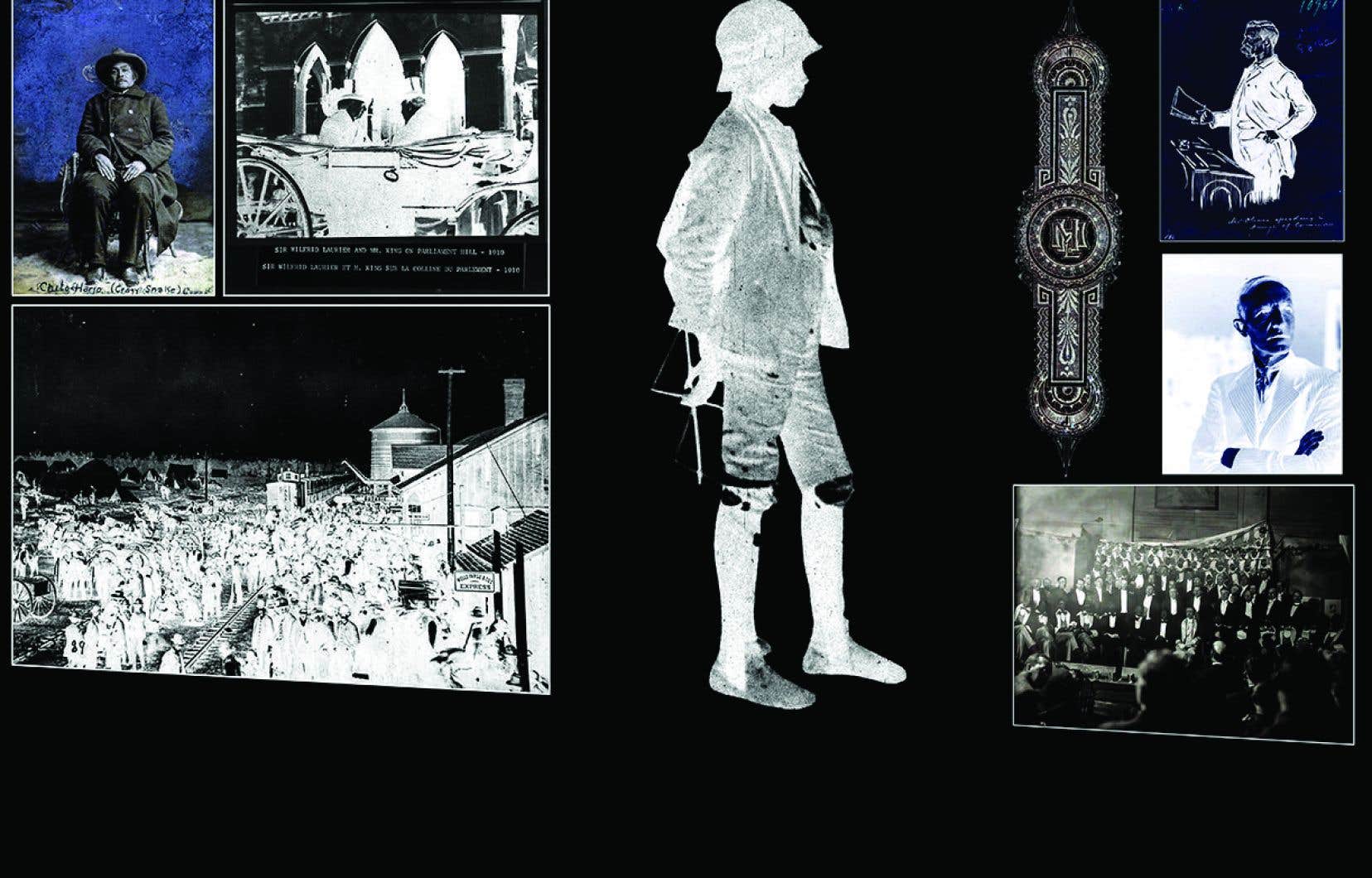After the theory, practice. The National Gallery of Canada (NGC) adopted at the start of the decade a five-year strategic plan (2021-2026) to decolonize its outlook. The very concrete artistic effects of this new orientation will be exhibited with the large genealogical fresco Black Canadians (after Cooke) by Montreal artist Deanna Bowen, presented from July 15 along the south facade of the establishment, in Ottawa.
“One of the goals of the strategic plan is to strengthen community ties through transformative artistic experiences: we obviously have that with this work on the facade of the museum and on this scale, said in an interview with the Duty NGC curator Jonathan Shaughnessy, curator of the expo. There is always this idea that the works of art on display are important in themselves and for the artists who create them. Deanna is an important artist in contemporary art. She has worked for two decades and more to review the complex history of our country, always linking it to the history of her family. »
This is the second installment in the series Women in the lead, inaugurated in 2001 with Barcelona, 2003-2021 by Geneviève Cadieux, who has been teaching art for years at Concordia University, just like Mme Bowen, in his case for a year. The new genealogical photographic fresco, taken from personal and public archives, will begin with an evocation of the artist’s great-great-great-grandfather and will end with the birth of his own mother in 1943. history will incorporate references to the abolition of slavery in the United Kingdom (1833) and to the article by Britton B. Cooke (mentioned in the title of the exhibition) published by the magazine Maclean’s in 1911 to start a petition against the immigration of African Americans to Canada.
Deanna Bowen is the descendant of two black families who left Alabama and Kentucky for Alberta. She herself was born in California. She divides her time between Toronto and Montreal. His auto-ethnographic artistic practice intertwines his family history with the great national, continental and world history.
“With this exhibition, I simply want to say that we are still here, my family and I,” replies Professor Bowen when asked what she wants to convey with this new creation. The federal government wanted to erase us, our stories were kept and studied. They are presented for other immigrant communities to hear and to be encouraged to speak up as well. »
The exhibition will unfold on 17 large panels reproducing 35 images. Journalists were able to see a selection online Wednesday noon.
The selected photographs are worked on by the artist, sometimes to reverse the negatives, sometimes to tint the images. There are portraits of powerful white men from the period covered, including the Marquess of Lorne, governor general when cultural institutions were created (including the NGC), and prime ministers (Macdonald, Laurier and Mackenzie King).
The Group of Seven is evoked by an image showing a work of AY Jackson. Media relayed the idea that the exhibition denounced white supremacism (a photo of the Ku Klux Klan in Vancouver appears in the selection), while linking this racist ideology to the most famous Canadian artistic school.
Mme Bowen explains that the 1911 anti-black article in the Canadian magazine was accompanied by a reproduction of a drawing by Lawren Harris, one of the Seven. his work, but it illustrates that the logic of the article was a common idea and openly discussed. So he could have known that his image would be included in this work and he probably did, but whatever. »
But still ? “The Group of Seven is featured in the exhibit — and I know it pisses people off — because of Barker Fairley, a great Group of Seven advocate who signed the 1911 petition calling for a ban on black immigration to Canada. She gives other explanations concerning the absence of Blacks or Aboriginals in the Group’s canvases, the social networks around the artists, the minstrel show presented at the Arts and Letters Club in Toronto where all these important people of the time socialized, etc.
“There are many reasons to establish links with ‘white supremacy’,” the artist continues. In fact, we are talking about British imperialism. And the exhibition will talk about it, therefore.
Mr. Shaughnessy clarifies that for him all these profound questions should not only be dealt with by members of ethnocultural minorities, say from the BIPOC community (Black, Indigenous and people of color).
“What does it mean to question the history that is always submitted to us? Our recent exhibition on Rembrandt also raised important questions. Can we still love Rembrandt when we know his links with slavery? I found the presentation very beautiful and I found it interesting that we are reminded that there is a whole world, a whole story behind the paintings. I also appreciate a lot when contemporary artists offer links with the art and works of the past. »
